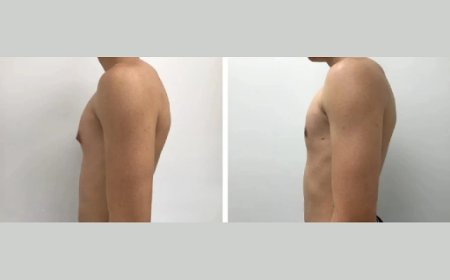Iron Deficiency Anemia: Causes, Symptoms, and Solutions
Iron deficiency anemia is the most common type of anemia worldwide, affecting millions of people, especially women and children. It occurs when the body lacks enough iron to produce adequate levels of hemoglobin, the protein in red blood cells responsible for carrying oxygen throughout the body. Without sufficient hemoglobin, your organs and tissues cant get the oxygen they need, leading to fatigue, weakness, and other serious health issues.
Heamclas-FCM Injection (Ferric carboxymaltose) is an intravenous iron replacement product used to treat iron deficiency anemia, particularly when oral iron supplements are ineffective or cannot be used. This treatment is especially beneficial for patients with chronic kidney disease, heart failure, inflammatory bowel disease, and in postpartum women or those with heavy menstrual bleeding.
What is Iron Deficiency Anemia?
Anemia refers to a condition in which the blood lacks enough healthy red blood cells. In the case of iron deficiency anemia, the root cause is a shortage of iron, an essential mineral needed to produce hemoglobin. When iron levels are low, the body cant produce enough hemoglobin, and as a result, red blood cells become smaller and carry less oxygen.
Causes of Iron Deficiency Anemia
Several factors can lead to iron deficiency anemia, including:
1. Inadequate Iron Intake
A diet low in iron-rich foods over time can result in a deficiency. This is common in individuals who follow restrictive diets or have poor eating habits.
2. Increased Iron Needs
Certain life stages, such as pregnancy, growth spurts in children, and menstruation, can increase the bodys need for iron.
3. Blood Loss
Loss of blood leads to a loss of iron. Common sources include:
-
Heavy menstrual periods
-
Gastrointestinal bleeding (from ulcers, hemorrhoids, or cancers)
-
Frequent blood donation or surgeries
4. Poor Absorption
Even if you're consuming enough iron, your body might not absorb it properly. Conditions such as celiac disease, Crohns disease, or previous gastrointestinal surgeries can interfere with iron absorption.
Symptoms of Iron Deficiency Anemia
Symptoms can be mild at first and often go unnoticed. However, as the condition worsens, you may experience:
-
Fatigue and weakness
-
Pale skin and cold hands or feet
-
Shortness of breath, even with mild exertion
-
Dizziness or lightheadedness
-
Headaches
-
Rapid heartbeat or irregular heartbeat
-
Brittle nails and hair loss
-
Craving for non-food items like ice, clay, or starch (a condition called pica)
-
Restless leg syndrome
Children with iron deficiency may also experience poor growth, behavioral problems, and learning difficulties.
Diagnosis
Iron deficiency anemia is usually diagnosed through blood tests, including:
-
Complete blood count (CBC): Measures the levels and size of red blood cells
-
Serum ferritin: Indicates the amount of stored iron
-
Serum iron and transferrin saturation: Show how much iron is in the blood and how well it's being transported
In some cases, additional tests may be needed to identify underlying causes of blood loss or malabsorption.
Treatment and Management
1. Iron Supplements
The most common treatment is oral iron supplements, usually ferrous sulfate. These help replenish iron stores but may cause side effects like constipation or stomach upset. Its important to take them as directed by a healthcare provider.
2. Dietary Changes
Include more iron-rich foods such as:
-
Red meat, poultry, and fish
-
Leafy green vegetables (spinach, kale)
-
Legumes (lentils, beans)
-
Iron-fortified cereals and grains
-
Dried fruits (apricots, raisins)
Vitamin C helps increase iron absorption, so pairing iron-rich foods with citrus fruits or tomatoes can be beneficial.
3. Treat Underlying Causes
If the anemia is caused by chronic blood loss or a medical condition, addressing the root cause is essential. In severe cases, iron injections or blood transfusions may be necessary.
Prevention Tips
-
Eat a balanced diet rich in iron and vitamin C
-
Women with heavy periods may need iron supplements
-
Regular screening for anemia, especially in high-risk groups
-
Monitor childrens growth and behavior for signs of deficiency
Conclusion
Iron deficiency anemia is a common but treatable condition. Left unchecked, it can lead to serious health complications, especially in pregnant women and young children. Recognizing the signs early, making dietary adjustments, and following your doctors recommendations can help restore healthy iron levels and improve your overall well-being. If you suspect you might have anemia, consult a healthcare professional for proper diagnosis and treatment.































